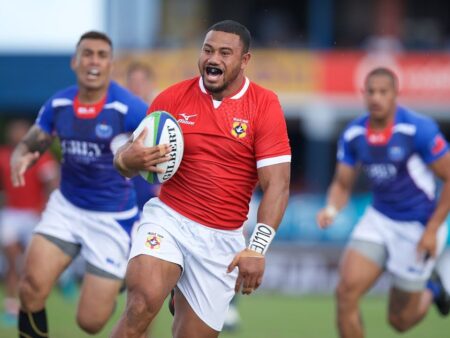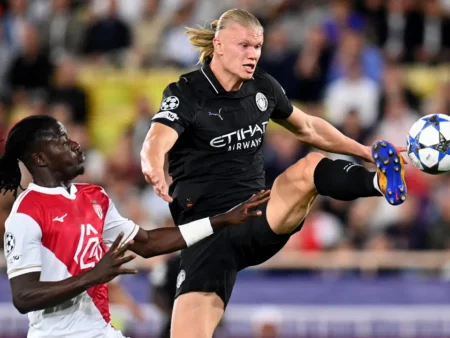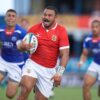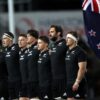Oakmont, Pennsylvania – The 125th edition of the U.S. Open arrives this week at Oakmont Country Club, a venue long considered one of the most formidable challenges in men`s professional golf. Recent reports from tour pros previewing the redesigned course near Pittsburgh have painted a picture of extreme difficulty, using words like `carnage,` `cooked beyond belief,` and labeling it the `hardest course in the world.`
Get ready for a demanding spectacle as golfers grapple with ankle-deep rough, narrowed fairways, the legendary Church Pews bunker, and greens so fast and firm they`ve been likened to putting downhill on an ice rink. Survival will be the key word for many.
According to Xander Schauffele, “I`ve heard from several players, it`s the hardest course they`ve ever played. That`s kind of what most people have talked about. Not much detail on why. Just it`s long and the rough is impossible, and you can end up hitting 50-yard pitches trying to get up and down for par on every hole, something of that nature.”
This marks Oakmont`s 10th time hosting the U.S. Open, a frequent return driven by the USGA`s commitment to presenting players with the season`s ultimate test.
Justin Thomas, who recently played a practice round, confirmed that “all of the rumors and everything are pretty on point.”
Here is a breakdown of the field, assessing the favorites, key contenders, potential sleepers, qualifiers, and amateurs:
Tier I: The Clear Favorite
Scottie Scheffler once again stands alone at the top of men`s professional golf. The world No. 1 arrives at Oakmont in blistering form, having won three of his last four tournaments, including a dominant victory at the Memorial Tournament. With multiple Masters and a PGA Championship title already secured, a win this week would bring him within one leg of the career Grand Slam.
Scheffler has a connection to Oakmont, having shot a 1-under 69 in his initial major round here as a 19-year-old amateur during the 2016 U.S. Open (he missed the cut after a second-round 78). If he maintains his renowned accuracy off the tee, he will be exceptionally difficult to overcome.
Tier II: Major Contenders
This group comprises players with the pedigree, skill set, and mental fortitude required to seriously compete for the U.S. Open trophy on Oakmont`s challenging layout. They have the capability to handle four rounds under immense pressure.
Bryson DeChambeau: The defending U.S. Open champion, who won at Pinehurst despite finding less than 60% of fairways. His winning strategy relied on power, precise irons, and outstanding putting. He`ll need to find more accuracy at Oakmont, but his record of five top-six finishes in the last six majors makes him a prime threat.
Rory McIlroy: Seeking to overcome the disappointment of last year`s U.S. Open finish, where crucial short putts cost him the title. His previous appearance at Oakmont nine years ago resulted in a missed cut. Recent struggles with driving accuracy led to a missed cut at the Canadian Open, and he is reportedly experimenting with drivers.
Collin Morikawa: A two-time major winner with two runner-up finishes this season. While his last tour victory was over 19 months ago, his exceptional driving accuracy (72.9%) and world-class ball-striking (67.6% greens in regulation) make him a strong candidate to end that drought on a demanding course like Oakmont.
Jon Rahm: The 2021 U.S. Open champion who recently contended at the PGA Championship before a late collapse. He has a solid U.S. Open track record with four top-12s in his last five starts. However, recent issues with driving accuracy would be severely penalized at Oakmont.
Russell Henley: Enjoying a strong season highlighted by a win at the Arnold Palmer Invitational and multiple high finishes. His accuracy off the tee (tied 12th), strong approach play (16th in strokes gained), and excellent short game (11th) are ideal attributes for Oakmont.
Sepp Straka: An often-underrated player with two wins and numerous top-10s this season. His game is built on finding fairways (68.5%), leading the tour in greens in regulation (71.4%), and solid putting (17th), a profile well-suited for a U.S. Open test, despite missed cuts in the year`s first two majors.
Xander Schauffele: The winner of last year`s PGA Championship and Open Championship is aiming for the third leg of the career Grand Slam. His putting, which had been a relative weakness, appears to be improving. His U.S. Open record is exceptional, with seven top-10 finishes in eight starts, including a tie for seventh last year.
Ludvig Åberg: The talented 25-year-old Swede displays flashes of brilliance, with a win at the Genesis Invitational and a solo seventh at the Masters. While his overall stats can show inconsistency, his immense talent and ball-striking ability suggest a game tailor-made for a U.S. Open victory.
Hideki Matsuyama: The 2019 Masters champion`s streak of 19 consecutive major cuts ended at the PGA Championship. He has two top-10s in his last three U.S. Opens, but his driving accuracy (55.3%) could be a significant hurdle at Oakmont.
Justin Thomas: After a red-hot start to the season with a playoff win and three runner-up finishes, his form has cooled slightly. A missed cut at the PGA was followed by a T-31 at the Memorial, though his weekend play there showed signs of improvement.
Shane Lowry: Outside of a missed cut at the PGA Championship, the Irishman has been playing consistently well. He was the runner-up at the 2016 U.S. Open at Oakmont, holding a four-shot final round lead before finishing second to Dustin Johnson.
Harris English: Secured his fifth tour win in January and achieved a career-best major finish with a tie for second at the PGA Championship. If he sharpens his iron play and touch around the greens, his strong putting could put him in contention again.
Patrick Cantlay: Although winless for over 2.5 years, Cantlay was in the mix late at Pinehurst, tying for third. His game is statistically strong, ranking highly in strokes gained total and approach, making him a player who could peak at the right time.
Justin Rose: The 2013 U.S. Open champion and recent major runner-up (2024 Open Championship, 2025 Masters playoff loss) proves he can still compete, but he has missed the cut in four of his last five U.S. Open starts.
Tommy Fleetwood: A consistent top-25 performer this season, Fleetwood is still seeking his first PGA Tour victory. His steady play could be rewarded on a difficult course.
Viktor Hovland: Known for exceptional iron play and reasonable driving accuracy. Success at Oakmont will largely depend on whether his short game and putting can hold up on the treacherous greens.
Aaron Rai: The tour leader in driving accuracy (73.4%), a critical asset at Oakmont. He will need his putting to cooperate.
Tyrrell Hatton: Has been playing at an elite level but has a mixed record in U.S. Opens, with only one career top-10 finish (2018).
Corey Conners: The Canadian is accurate off the tee (68.8%) and hits plenty of greens (70%). Improved putting this season makes him a stronger threat, following a tied ninth finish at Pinehurst last year.
Ben Griffin: His rapid rise from former mortgage loan officer is remarkable. Griffin`s recent individual win and runner-up show incredible form and momentum heading into his U.S. Open debut.
Joaquín Niemann: A four-time winner on the LIV Golf League this year. His tie for eighth at the PGA Championship was a significant breakthrough in majors, suggesting he might be ready to make noise in the biggest events.
Tier III: If Everything Goes Right (Sleepers)
This category includes players who have the potential to win the U.S. Open if they hit their stride and the challenging Oakmont conditions play to their strengths. This diverse group features former major champions, rising stars, and consistent tour pros.
Tony Finau: Showed improved form with recent top-20s and finished tied for third at the U.S. Open last year, capped by a strong final round.
Brian Harman: The reigning Open champion excels in tough conditions and has made the cut in his last five U.S. Opens. He has a win and a T-3 finish this season.
Cameron Smith: His world-class putting is perfectly suited for Oakmont`s greens. However, recent missed cuts in majors raise questions about whether his LIV schedule provides enough competitive prep.
Matt Fitzpatrick: The 2022 U.S. Open champion`s tie for eighth at the PGA Championship indicates his game is trending in the right direction. He`s proven he can win in difficult major conditions.
Jordan Spieth: Since winning at Chambers Bay in 2015, his U.S. Open record includes only one top-20 finish (T-19 in 2021).
Brooks Koepka: A two-time U.S. Open winner who once seemed unbeatable in majors. He has missed the cut in the first two majors this year and hasn`t had a top-10 since winning the 2023 PGA.
Min Woo Lee: Known as “Dr. Chipinski” for his short game wizardry, he has three straight strong U.S. Open finishes, including a T-5. His form has been inconsistent since the Masters.
Sam Burns: Has played better recently after a slow start to the season. His T-9 at last year`s U.S. Open was a major breakthrough, and he leads the tour in strokes gained: putting, a huge advantage at Oakmont.
Ryan Fox: Earned his spot by winning the Canadian Open playoff, building on a strong season that includes another win.
Andrew Novak: A breakout player this season with a team win and an individual runner-up. This is just his second U.S. Open start.
Patrick Reed: Consistently performs well at the Masters but has only one U.S. Open top-10 finish (4th in 2018).
Robert MacIntyre: A two-time national champion last year (Canadian Open, Scottish Open). He described Oakmont on a simulator as “absolute carnage,” acknowledging the test.
Daniel Berger: Has multiple U.S. Open top-10s and was playing well before two recent missed cuts.
Davis Riley: Achieved his best major finish with a tie for second at the PGA Championship.
Tom Kim: Has a solid recent U.S. Open record with three straight top-26 finishes, including a T-8. He has struggled with form over the past two months.
Maverick McNealy: His first U.S. Open start since qualifying as an 18-year-old amateur at Pinehurst in 2014.
Akshay Bhatia: Showing improved form recently. His putting and versatile game suggest he has the shots needed to contend, particularly on demanding greens.
Thomas Detry: Despite some driving and iron inconsistency, his exceptional putting could allow him to compete, as demonstrated by his T-14 finish at Pinehurst last year.
Si Woo Kim: Known for moments of brilliance, including the longest ace in major history recently. Consistency will be crucial for him.
Keegan Bradley: The U.S. Ryder Cup captain has a mixed record in the U.S. Open, with several missed cuts but also a T-7 finish in 2022.
Jason Day: Tied for eighth the last time Oakmont hosted in 2016. Recent wrist injury concerns may impact his performance.
J.T. Poston: Coming off his best major finish (T-5 at the PGA Championship), his form was strong before a recent missed cut.
Denny McCarthy: His putting is strong enough to give him a chance to contend, with three consecutive solid U.S. Open finishes (best T-7 in 2022).
Michael Kim: Had a hot streak earlier in the spring but has cooled off. He was low amateur and tied for 17th in his 2013 U.S. Open debut.
Davis Thompson: Immensely talented but still working on consistency. His T-9 finish at Pinehurst last year was his best major result.
Dustin Johnson: Won the contentious 2016 U.S. Open at Oakmont. He has not been a significant factor in major championships over the past two seasons.
Wyndham Clark: The defending champion`s form has declined recently. Inaccuracy off the tee and struggles with irons are concerning for a course like Oakmont.
Sungjae Im: Another player who generally keeps the ball in play off the tee but has missed the cut in his last three U.S. Open appearances.
J.J. Spaun: A two-time runner-up this season, including a playoff loss. This is only his second U.S. Open start.
Jacob Bridgeman: A potential dark horse with excellent putting and previous solid play at Oakmont during the 2021 U.S. Amateur. He has multiple top-10s this season.
Rasmus Højgaard: A five-time winner on the DP World Tour, making his second U.S. Open start.
Joe Highsmith: A breakout performer this season with a win and a T-8 finish at the PGA Championship.
Ryan Gerard: Looking to build on a surprising tie for eighth at the PGA Championship.
Lucas Glover: The 2009 champion`s putting has been inconsistent recently, which has impacted his contention chances. He missed the cut in his two previous U.S. Open starts at Oakmont (2007, 2016).
Matthieu Pavon: The first Frenchman to win on the PGA Tour (Farmers Insurance Open). He also finished solo fifth at Pinehurst last year.
Nick Taylor: A five-time PGA Tour winner still searching for success in major championships.
Taylor Pendrith: Has performed well in recent majors, including a T-16 last year and a T-5 at the recent PGA Championship.
Adam Scott: The 2013 Masters champion`s best major contention days are likely behind him, with only one top-10 in a major since 2019.
Cameron Young: Had to go through final qualifying to make the field but has shown improved play lately.
Bud Cauley: Returning to the U.S. Open field for the first time in eight years after overcoming injuries from a 2018 car accident.
Stephan Jager: Tied for 21st last year and showed promising early form at the PGA Championship before fading.
Tier IV: Hey, Miracles Happen (Long Shots)
This tier includes players for whom a victory would be a significant surprise, requiring a career-best week and fortunate circumstances. It features a mix of established pros and former major winners.
Gary Woodland, Brian Campbell, Cam Davis, Laurie Canter, Mackenzie Hughes, Jhonattan Vegas, Nico Echavarria, Max Greyserman, Sam Stevens, Emiliano Grillo, Matt Wallace, Marc Leishman, Chris Kirk, Tom Hoge, Christiaan Bezuidenhout, Byeong Hun An, Thriston Lawrence, Mark Hubbard, Lanto Griffin, Justin Lower, Richard Bland, Eric Cole, Doug Ghim, Carlos Ortiz.
Jhonattan Vegas recently demonstrated capability by grabbing early leads and finishing T-5 at the PGA Championship, though he`s never finished higher than 40th at the U.S. Open. Gary Woodland (2019 U.S. Open winner), Chris Kirk (six-time tour winner), and Marc Leishman (multiple wins globally) are proven winners capable of putting four strong rounds together if their game aligns.
Tier V: Happy to Make the Cut
These players are not expected to contend for the title unless highly unusual events unfold. For them, making the cut on Oakmont`s demanding layout would constitute a successful tournament.
Phil Mickelson, Nick Dunlap, Matt McCarty, Erik van Rooyen, Thorbjørn Olesen, Victor Perez, Niklas Nørgaard, Zac Blair, Chris Gotterup, Will Chandler, Trevor Cone, James Hahn, Adam Schenk.
Phil Mickelson, a six-time major winner and record six-time U.S. Open runner-up, has indicated this is likely his final opportunity to complete the career Grand Slam, as his exemption from the 2021 PGA Championship expires. He has missed the cut in four of his last five U.S. Open starts and hasn`t finished inside the top 40 since 2014.
Nick Dunlap had a remarkable season last year with two tour wins (one amateur, one pro) but has struggled significantly since turning professional, missing the cut in six of his last nine starts and failing to make the weekend in any of his five major appearances over the past two years.
Tier VI: The Qualifiers
This significant group comprises the 65 players who earned their way into the field through local and final qualifying, without being otherwise exempt tour regulars or amateurs in other tiers. Lucas Glover in 2009 was the last qualifier to win the U.S. Open.
Yuta Sugiura, James Nicholas, Roberto Díaz, Ben James, Zach Bauchou, Scott Vincent, Jordan Smith, Joakim Lagergren, Jinichiro Kozuma, Guido Migliozzi, Frédéric Lacroix, Sam Bairstow, Edoardo Molinari, Jacques Kruyswijk, Andrea Pavan, Rasmus Neergaard-Petersen, Alistair Docherty, Johnny Keefer, Alvaro Ortiz, Emilio Gonzalez, Trent Phillips, George Kneiser, Chandler Blanchet, Justin Hicks, Philip Barbaree Jr., Jackson Buchanan, Ryan McCormick, Bryan Lee, Harrison Ott, Grant Haefner, George Duangmanee, Kevin Velo, Brady Calkins, Joey Herrera, Austen Truslow, Chase Johnson, Matthew Jordan, Takumi Kanaya, Riki Kawamoto, Riley Lewis, Maxwell Moldovan.
Among the qualifiers are notable stories: James Nicholas, a former Yale football and golf player with a family sports background; Justin Hicks, a 50-year-old golf instructor who once held a share of the first-round lead at the 2008 U.S. Open; and Grant Haefner, who dramatically holed a 60-foot putt on the 36th qualifying hole to earn medalist honors.
Tier VII: The Amateurs
These amateur players will compete with the goal of being the low amateur, an honor achieved by many stars before turning professional, including several in the field this week.
Jose Luis Ballester, Noah Kent, Evan Beck, Trevor Gutschewski, Michael La Sasso, Justin Hastings, Lance Simpson, Cameron Tankersley, Frankie Harris, Mason Howell, Tyler Weaver, Jackson Koivun, Matt Vogt, Preston Summerhays, Zachery Pollo.
A strong contingent of 15 amateurs qualified this year, many with compelling stories. Matt Vogt, a Pittsburgh native and former Oakmont caddie now working as a dentist, medaled in qualifying and honored his late father. Mason Howell, a 17-year-old high school senior, qualified with an exceptional bogey-free 18-under performance over two rounds. Michael La Sasso, an Ole Miss junior, earned his spot by winning the NCAA Division I individual championship, while his teammate Cameron Tankersley also qualified. Trevor Gutschewski, an incoming University of Florida freshman, qualified by winning the 2024 U.S. Junior Amateur.










